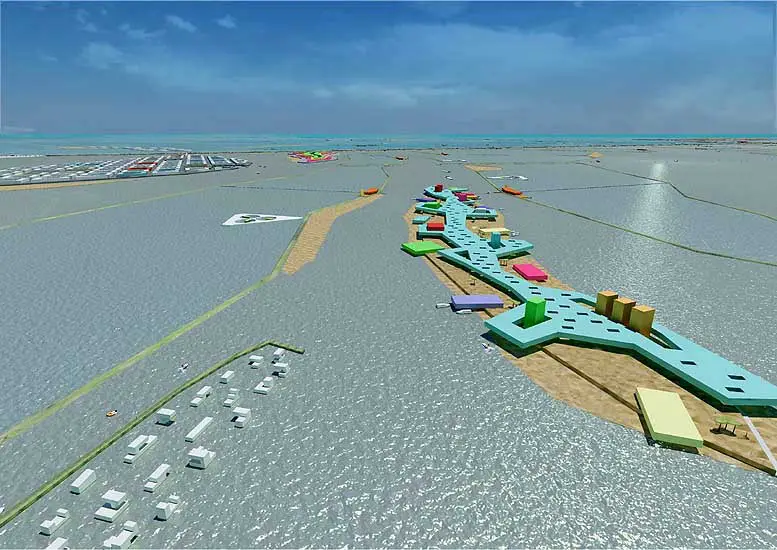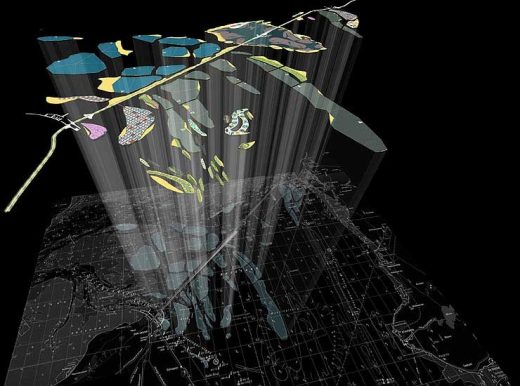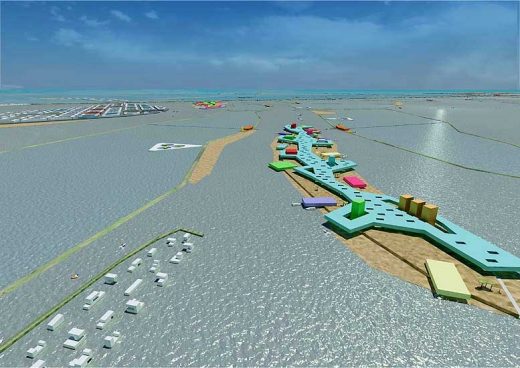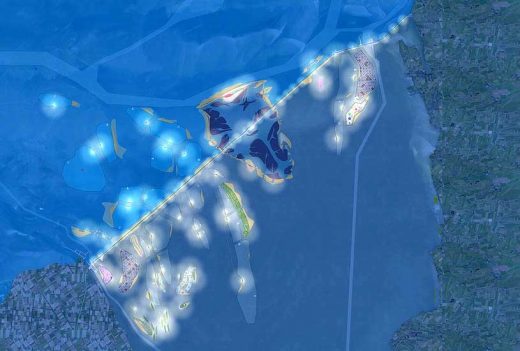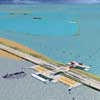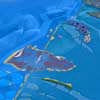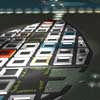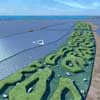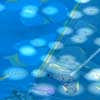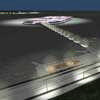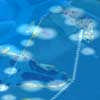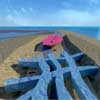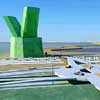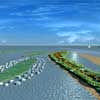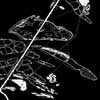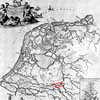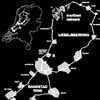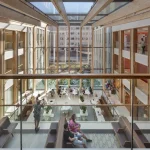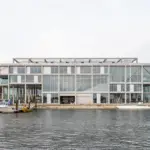Maritime Network Holland, Building, Project, Photo, News, Design, Property, Image
Maritime Network : Architecture
Dutch Architecture by Monolab, Architects
25 Mar 2009
Maritime Network The Netherlands
Date of design: 2007
Design: Monolab
VISION AFSLUITDIJK © 2007
Client: Office of the State Architect, Ministry of Spatial Planning VROM, Rijkswaterstaat – Department IJssel Lake Area Board Roads and Waterways
Design: Monolab
MARITIME NETWORK
A future oriented vision like this demands a specific mindset, a way of thinking directed by developments. Seven robust long-term conditions1) are leading us into the design of an archipelago network with islands and water parcels within three ecosystems (salt, brackish, fresh), in which recreation, aquaculture, housing, commercial program and a University for Coastal Zones operate in close harmony…
maritime landscape
The invisible seafloor of Wadden and IJssel Lake and the current shipping lanes define a ‘maritime landscape’ and a meaningful carrier of our layout. This design is a translation into an archipelago of three ecosystems: salt (Wadden), brackish (UCS University Campus) and fresh (IJssel Lake).
network
All recreative, scientific and commercial program is organised in compact enclaves (islands and water parcels), with a maximum variation parallel to the dam and maximum functional use perpendicular to the dam. They co-operate in an optimum through a network made by the dam in a central position with current motorway, new parallel road and ten interfaces and by a number of transport systems on water on behalf of recreation, maritime ‘bio-industry’, housing, commercial property and a university.
The ten interfaces consist of roundabouts suspended over the motorway linked with many ramps. The interfaces take care of parking, exchange of vehicles, cyclists, pedestrians and public transport systems between motorway, parallel road and water. Linked floating platforms, piers and jetties connect land- and water program.
Some heavily programmed islands have dedicated links for vehicles from the dam over elevated roads. The planned rise of the dam by 1,5-m is made by a quay on the IJssel Lake side. Although a quay is more expensive, the motorway can stay and on the quay sufficient space is available for the parallel road and the bicycle path.
distribution and traffic
Transport of goods and people takes place with carrier ships and public transport systems: powerboats, waterbusses, hovercrafts and amphibian vehicles. Also floating jetties and piers are in function. The residents of this maritime zone will use private rafts, preferably propelled by compressed air and electricity. It is important to avoid anaerobic conditions. This makes big, fixated floating platforms impossible as these would stop solar light and movement of water.
islands
The islands are very diverse, each one its own identity and quality. The use of islands prevents spilling because reclaimed land is not in stock. A pure example is the dense programmed ‘Split City’, two islands at a 22-km distance on both ends of the zone: together ‘a city with no periphery’ that consists only of downtown program. Within 15 minutes connected through powerboats racing at speeds of 90 km/h.
Two more islands are functionally programmed as shopping enclaves: medieval urban tissue of four floors with living in the top and shopping in the lower levels. Islands with programmatic ‘depth’ like sports facilities, entertainment, extreme sports, maritime restaurants, a foodmarket, campsites, hotels, clubs, city blocks and villa parks have spread positions through the layout of the maritime landscape.
water parcels
In this constellation also the water parcels for aquaculture are located: protected by low dikes and serviced by cleaning installations and harvest stations. They also operate as monitoring stations of the university. In this way industrial aquaculture and university co-operate closely. In this variable layout islands and parcels create their mutual existence and locations.
A necessity for the quality of the ecosystems is a zero ecological footprint of all islands through purification of waste and sustainable energy systems. To achieve this we propose an abundance of sewer systems between islands and the shore.
A challenge for the maritime research in ecosystems are the issues of impact of fishery, pollution and climate variations and the internal dynamics of the ecosystems. Many layouts can be planned and designed, our scheme is one of these, depending on economy, government, market, planning, finances and cultural conditions.
1) Seven robust longterm conditions
1. the Wadden area will develop
The Wadden area is made by human activities. It is a necessity to consider the interventions in this area in a historic perceptive. The Romans already dug a canal to link the rivers of Rhine and IJssel. The Romans dug the canal ‘Fossa Drusiana’ from 38-9 b Ch. between the rivers Rhine and IJssel to be able to move quickly North.
Additionally they forced extra Rhine water to the North to construct a natural barrier between themselves and the barbarians. This developed in a fast growing Flevo Lake: the large scale human intervention has started. After this many interventions followed up during centuries. The questions is not if, but how we are going to intervene.
2. growth of tourism leads to a double coast length
Tourism, mondial and European, doubles between 2007 and 2020 (source: UNWTO – World Tourism Organisation). This enormous growth indicates the need for extra facilities in Holland. Stretching the coast line outside the Randstad zone (Scheveningen-Den Helder) is a necessity. In our layout the Dutch coast length is multiplied to a 240-km length and supported by a more varied program.
3. climate change leads to a University for Coastal Zones
The Dutch Meteorological Institute KNMI, calculated with four scenarios a warmer Dutch climate and a rising sea level. The Dutch climate will develop towards a more Mediterranean mode. Summers and winters will be warmer with much more showers. This has an impact on the draining of overflow water into the North Sea.
The conditions of the Dutch coastal zone combined with the experience in maritime coastal defence makes Holland into a favourable epi-center for a European University for Coastal Zones with its campus in the Afsluitdam zone and with a global importance for all populated lower coastal zones.
The future surplus in draining the overflow of the IJssel Lake into the Wadden introduces a third (brackish) eco system. Halfway the dam a series of shallow areas can be combined into a more or less circular campus of about 7 by 5-km. If one location is fit for a European University for Coastal Zones it is this one, right on the overlap of three systems and served by major infrastructure.
4. development of archipelago
In our scheme the seafloor of Wadden and IJssel Lake is thoroughly researched. Shallows are translated into islands, deeper parts are made into parcels for aquaculture, delivering a maritime landscape.
5. development of aquaculture
From ‘fighting the water’ to ‘co-operating with water’ can lead us to a developing large scale aquaculture with eco-certification. Globally the consumption of fish products is rising steadily. Because fishery is stagnating, this rise will be dealt with by cultivating fish. Aquaculture is the fastest growing primary food segment with a 9% growth per year (United Nations – Food and Agriculture Organisation).
We find ourselves on a tilting point: first in history we consume in 2007 as much cultivated fish as caught fish. Aquaculture delivers food and non-food products. Apart from fish, crustaceans and shellfish we have to focus on vegetable products in silted coastal zones. The two ecosystems in our layout are made fit for aquaculture, in order to produce natural products for the food- and pharmaceutics industry on a commercial scale. Fish, crustaceans, shellfish and maritime vegetation are produced in parcels. One part for direct consumption, the other part for raw products, and also part for restoration of the biodiversity and biolevels.
6. development of the North Netherlands
Increase of activities and labour can change the stagnation in the Northern part of Holland. A new way to map Holland is to consider the ‘IJsel Lake Ring’. We can link this ring to the Randstad Ring via the Amsterdam city ring. The IJssel Lake Ring develops more slowly compared to the Randstad Ring by much more free space for future programs. The Afsluitdijk is the vital Northern link and a bipolar gravitation point together with Amsterdam.
7. the capacity of the afsluitdam zone
The huge dimensions of the Afsluitdam zone display an easy absorption of big events like the Olympics, a World Expo, an airport or a University Campus.
© MONOLAB ARCHITECTS
Maritime Network images / information from Monolab 250309
Location: Netherlands, northern Europe
Architecture in The Netherlands
Contemporary Dutch Architecture
Netherlands Architecture Designs – chronological list
Amsterdam Architecture Walking Tours by e-architect
Dutch Architect : MONOLAB urbanism-architecture, Rotterdam, Netherlands
Café de Parel
Interior Design: Ninetynine
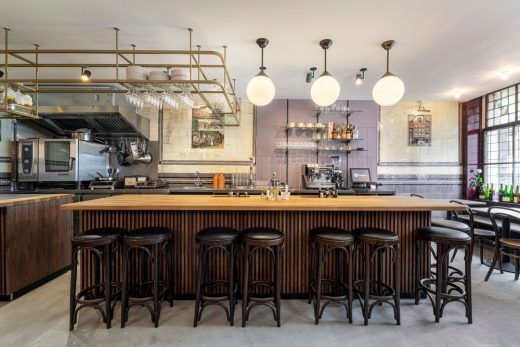
photo : Ewout Huibers
The Pearl Café on Westerstraat
Design: OMA
Coolsingel Rotterdam
Comments / entries for the Maritime Network Architecture page welcome:

